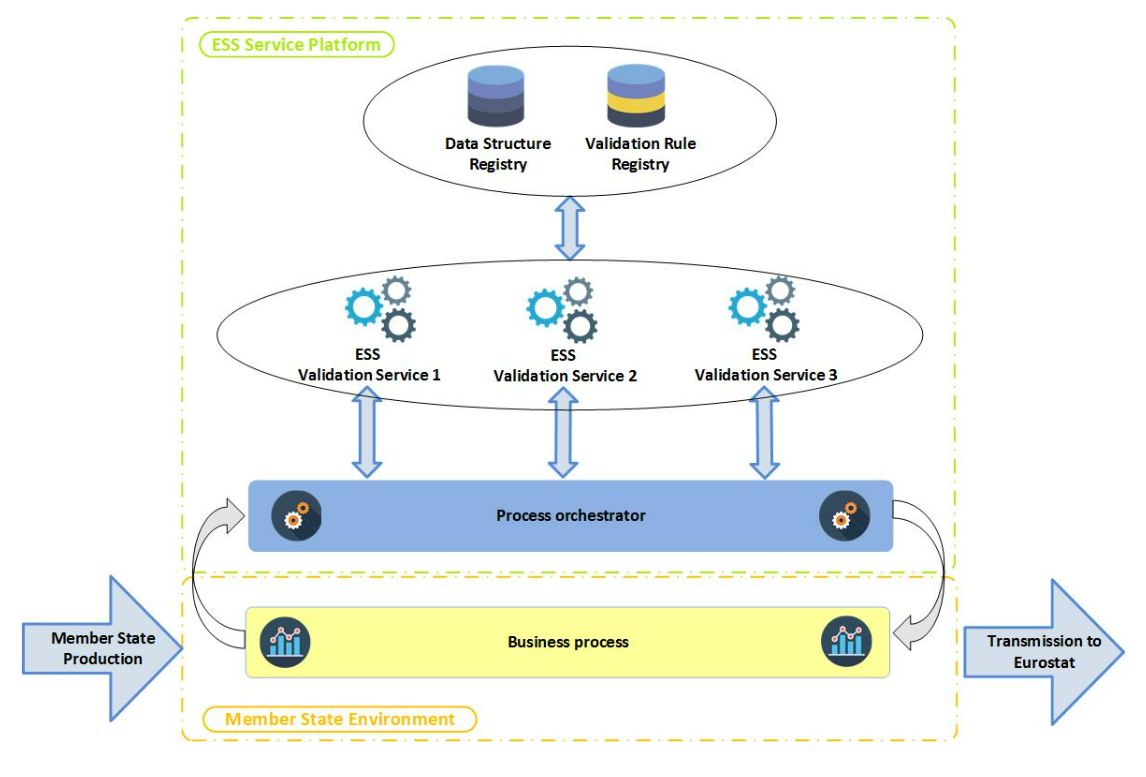As long as the validation rules that have been jointly agreed upon are applied, each Member State should be able to freely choose, for each statistical production process, the extent to which it wants to benefit from the availability of reusable ESS validation services. There are therefore three basic scenarios in which Member States could implement validation rules in the target to-be state.
The scenarios below represent rather idealised situations. In real-life situations, it is likely that Member States will create hybrid scenarios that incorporate elements from two or more scenarios. Each Member State would be free to mix and match the three scenarios as it sees fit.
Scenario 1: Autonomous validation services
In this scenario, Member States would use their own autonomous services to implement the validation rules before transmitting data to Eurostat. However, these services would use the data structures and validation rules jointly agreed upon, which would be stored in centrally hosted registries. Translating these validation rules into autonomous validation services would be the responsibility of each Member State.
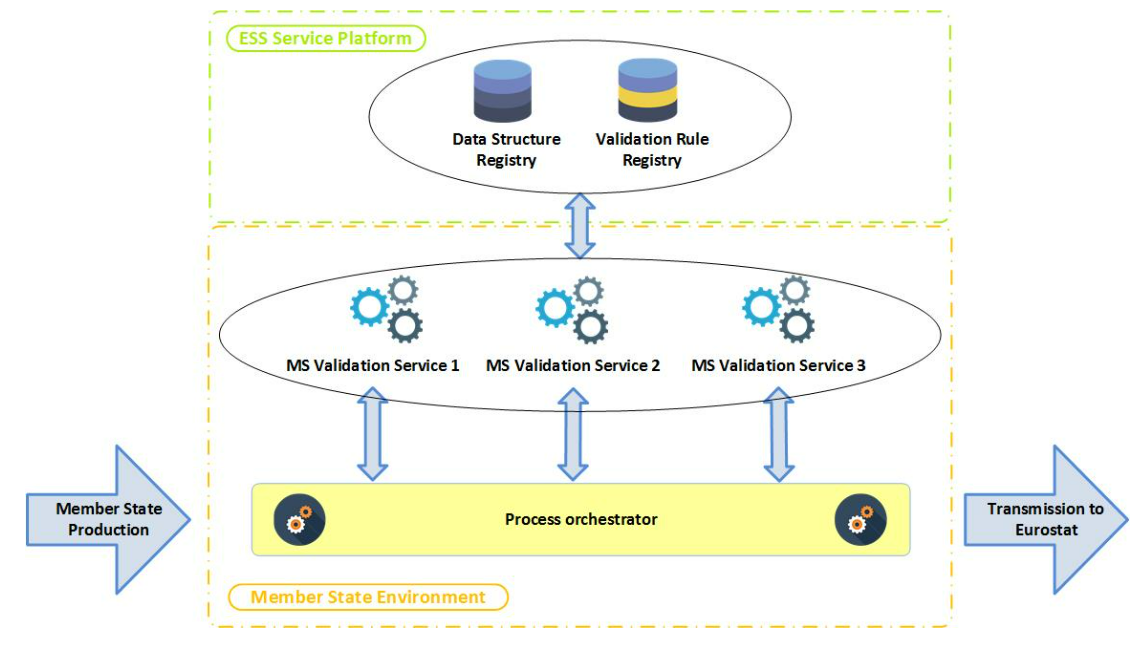
Scenario 2: Replicated/Shared validation services
In this scenario, in addition to the shared registries for data structures and validation rules, Member States would use certain replicated and/or shared validation services in their validation process. They would be free to select a combination of autonomous/interoperable/replicated and shared services they find most suitable. They would also still be responsible for managing the different services used in the validation process. This scenario can be likened to the Software as a Service (SaaS) model in cloud computing.
For the sake of clarity, the diagrams below will represent two possible configurations: one where Member States use only replicated services and one where Member States use only shared services. It should however be stressed that Member States are free to use whichever combination of shared or replicated services they prefer.
If only replicated services are used:
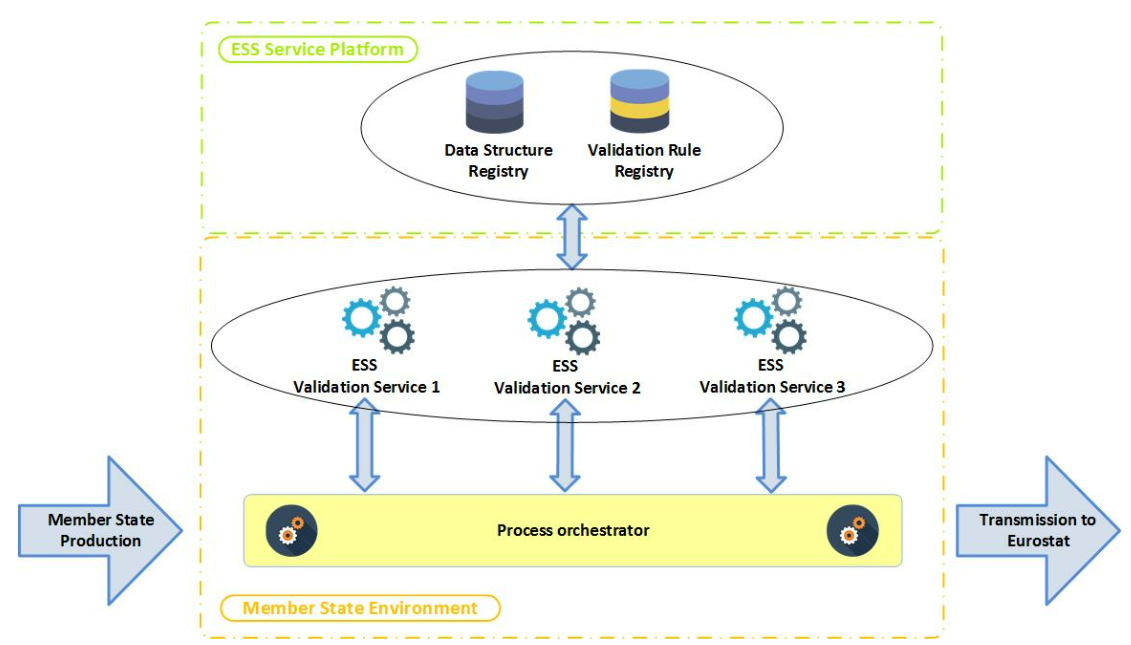
If only shared services are used:
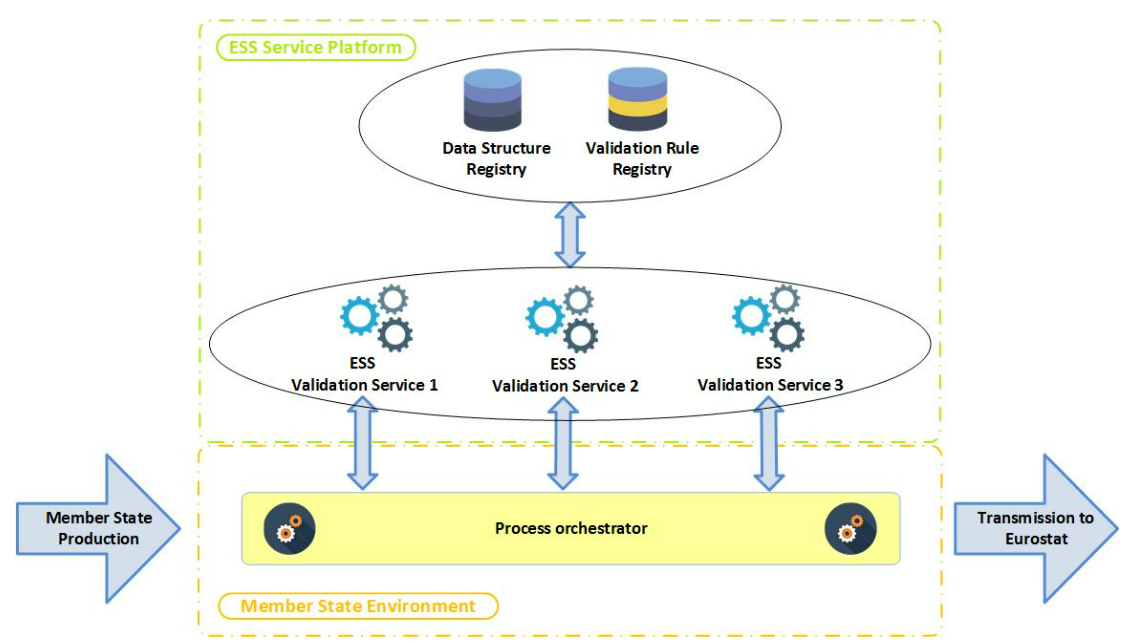
Mixed scenario - if shared and replicated services are used:
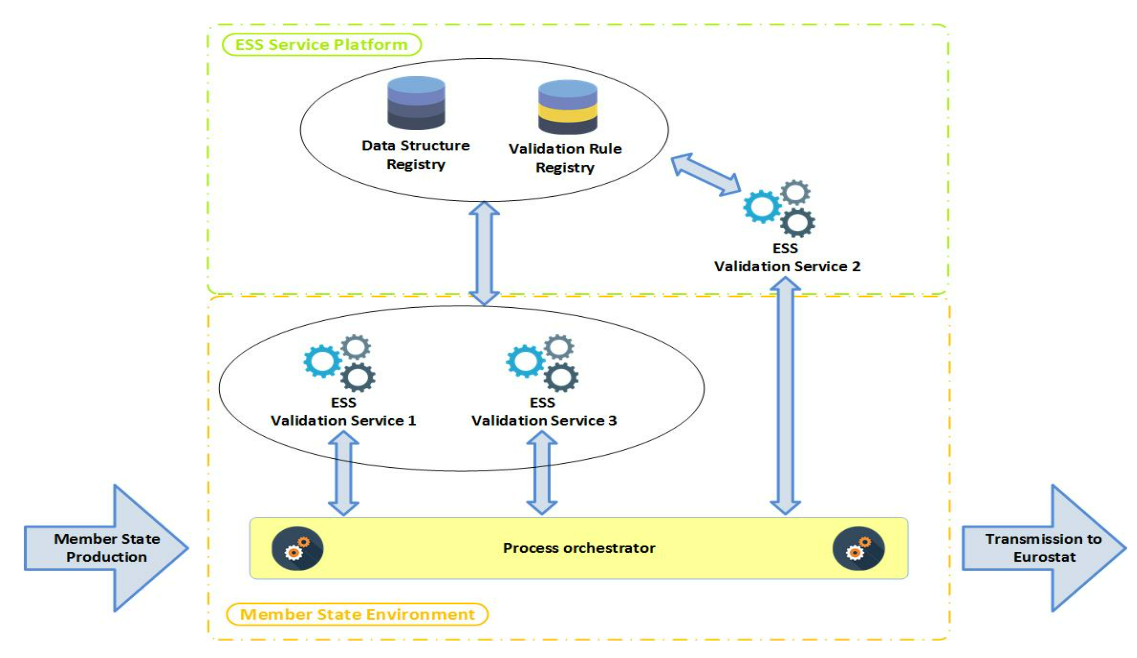
Scenario 3: Shared validation process
In this scenario, Member States would delegate the validation of their data to a shared validation process that is predefined centrally. This process would manage the various services needed and would provide the Member State with a comprehensive validation report. This scenario can be likened to the Business Process as a Service (BPaaS) model in cloud computing.
